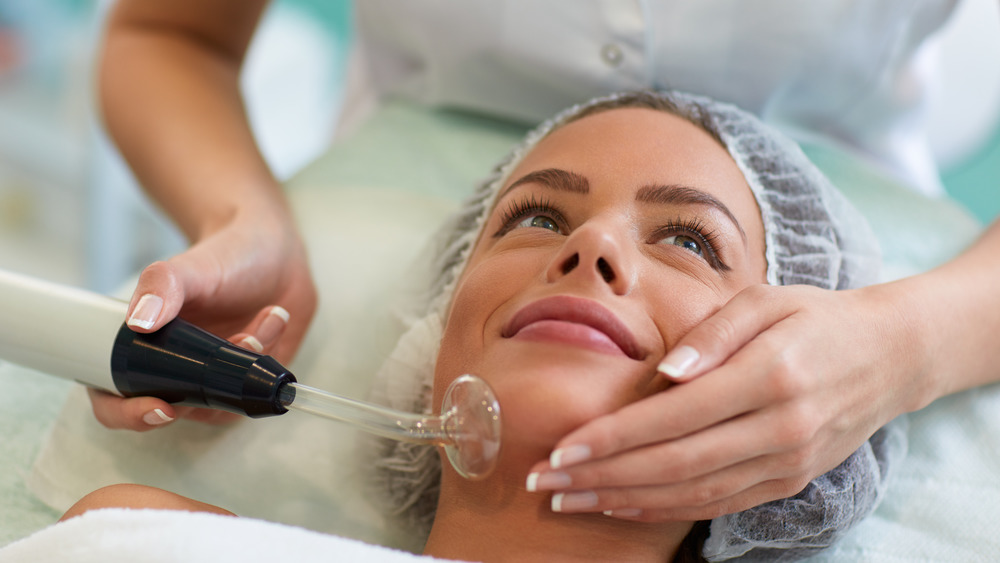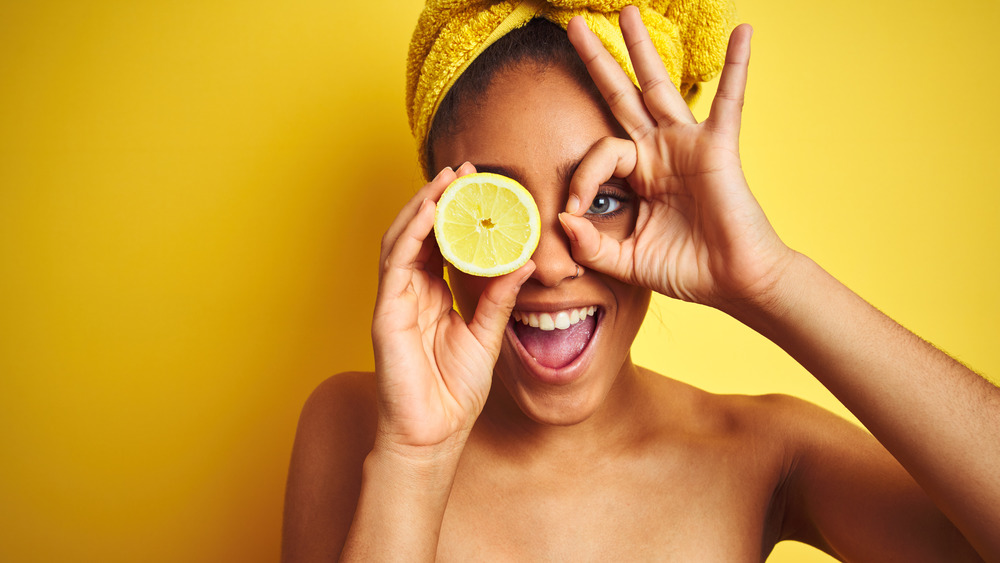Here's How You Can Remove Those Sunspots Once And For All
If you did not discover the importance of sunscreen until early adulthood or later on in life, then your skin has likely been gifted with (or plagued by) sunspots. Sunspots — also known as age spots or liver spots — are most often found on areas of the body that are frequently exposed to sun, such as the face and shoulders. Sunspots are typically flat in nature, which appear brown, gray, or black in color. While such spots are considered to be harmless changes in skin pigmentation (via Healthline), they certainly are not the most sought after physical characteristic most would want associated with their general appearance.
First and foremost, before you continue your quest for clearer skin, it is important to consult a skin care professional to make sure that spot (or spots) on your skin are, in fact, harmless sunspots. Board-certified dermatologist Jeanette M. Black, MD shared how many of her patients struggle from the beginning. "Many patients struggle with treating sunspots because the type of dyspigmentation they have is not properly diagnosed and treated," she explained (via Byrdie). Here is how you can remove these spots once and for all.
You can take the medical route, or go with home remedies
After you have confirmed that your sunspots are just that, there are a few different options you can choose to remove them. You could go the medical route and seek correctional treatment by trying procedures like intense pulsed light treatment, dermabrasion, cryosurgery, or a chemical peel (per Healthline). All of these treatments work to lighten and correct the color of sunspots. However, there can be side effects, so it is important to consult a skin care professional first.
If you are thinking 'a little less laser, a little more home remedy' is more your style, then you are in luck. There are treatments you can do at home to help lighten the appearance of sunspots. Jeanette M. Black, MD recommends over-the-counter products, like niacinamide (aka vitamin B3) and kojic acid, to help treat dyspigmentation (via Byrdie). It can also be done with natural remedies using lemon, sweet almond oil, and Vitamin E (per Brightside).
And sometimes the best treatment is prevention. Intense exposure to the sun can erase any headway you have made in getting rid of these spots and cause the pesky discolorations to come right back. Black recommends using a sunscreen of SPF 30 or higher, hats, and other skin protectants to keep your skin directly out of those sunspot-causing rays (via Byrdie). Perhaps the most important thing to know is that these spots are harmless to your health — and it is just an added bonus there are so many ways to treat them.

